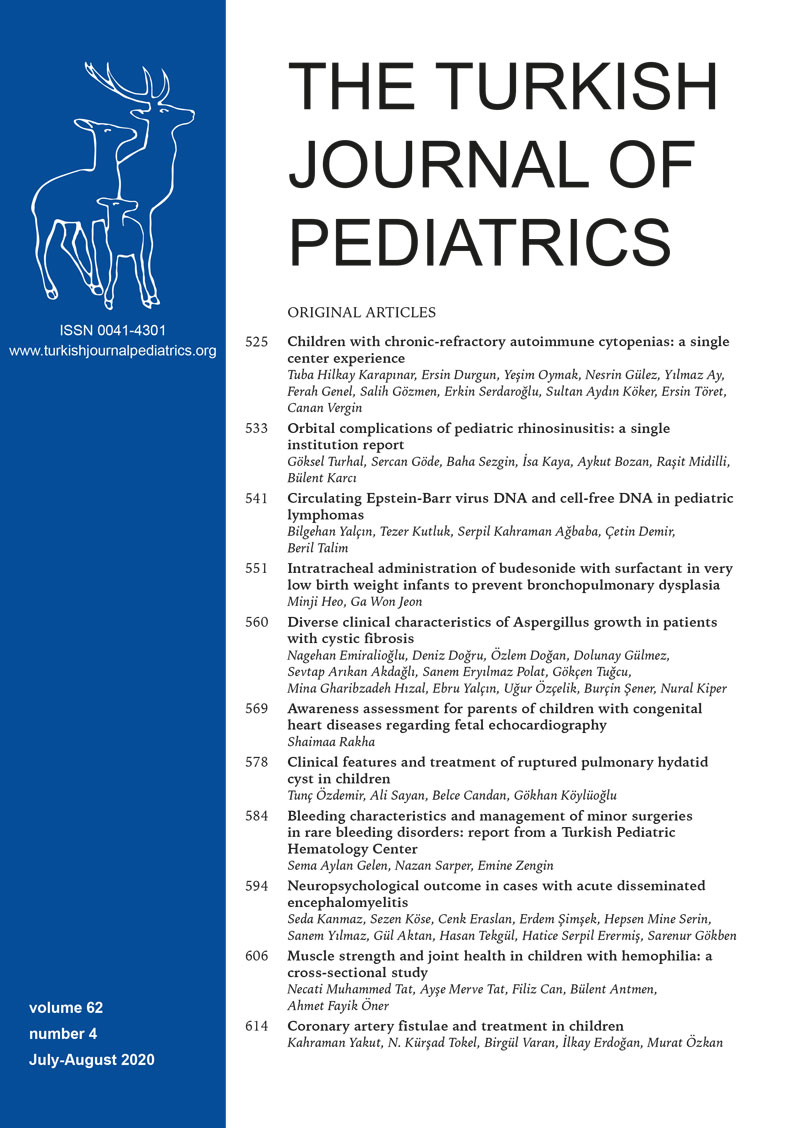Abstract
Background and Objectives. In this study, we aimed to review the treatment options and long-term problems of patients who were diagnosed with coronary artery fistulae (CAF) in our institution. We also tried to determine the most appropriate time for treatment of this condition.
Method. From 2000 to 2018, the medical records of 56 patients (33 males and 23 females) who had CAF diagnoses were retrospectively reviewed.
Results. The mean age of the patients at the time of diagnosis was 3.9 ± 4.6 years (range, 1 month to 18 years) and the mean duration of the follow-up period was 7.4 ± 4.5 years (range, 1 year to 17.5 years). The right coronary artery (RCA) was the most common origin site for CAF, the left main coronary artery (LMCA) was the second most common origin site whereas the left anterior descending coronary artery (LAD) was the third most common origin site. Catheter angiography showed that right ventricle (RV) was the site of termination for CAF in 23 patients (41.1%) while the CAF drained to the pulmonary artery in 16 patients (28.6%). Transcatheter intervention was performed in ten patients, while CAF were corrected surgically in five patients. Transcatheter intervention was initially attempted in two out of the five surgically-treated patients, but the procedure was unsuccessful. A vascular plug was deployed in six patients, a platinum coil was used in three patients, and a platinum coil with tissue adhesive was placed in one patient using a catheter. Early complications were seen in two patients during transcatheter intervention and in one patient during surgery. There were no instances of death or late complications in patients treated surgically or via transcatheter.
Conclusions. Coronary artery fistulae are usually asymptomatic, and medical therapy with long term follow up is the first line treatment. Fistulae that cause hemodynamically significant shunting, chamber enlargement, or visible symptoms should be closed at an early age. This study shows that transcatheter closure is a safe treatment option for CAF that may be performed with high success. Also, it should be known that surgery may be performed effectively with low rates of complications. Because complications can develop in treated and untreated patients of all ages, follow-up should occur during the patient`s lifetime.
Keywords: angiography, coronary artery fistulae, surgery treatment, transcatheter closure
Copyright and license
Copyright © 2020 The Author(s). This is an open access article distributed under the Creative Commons Attribution License (CC BY), which permits unrestricted use, distribution, and reproduction in any medium or format, provided the original work is properly cited.














